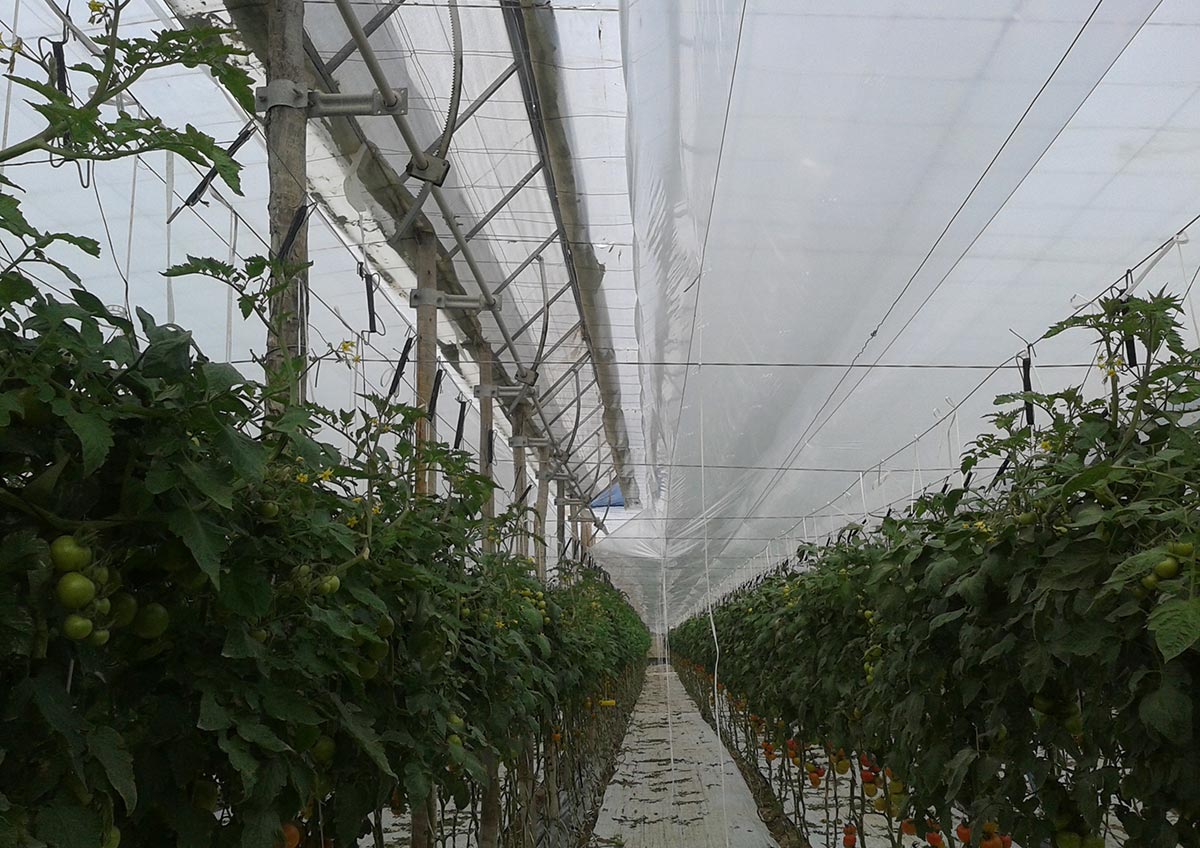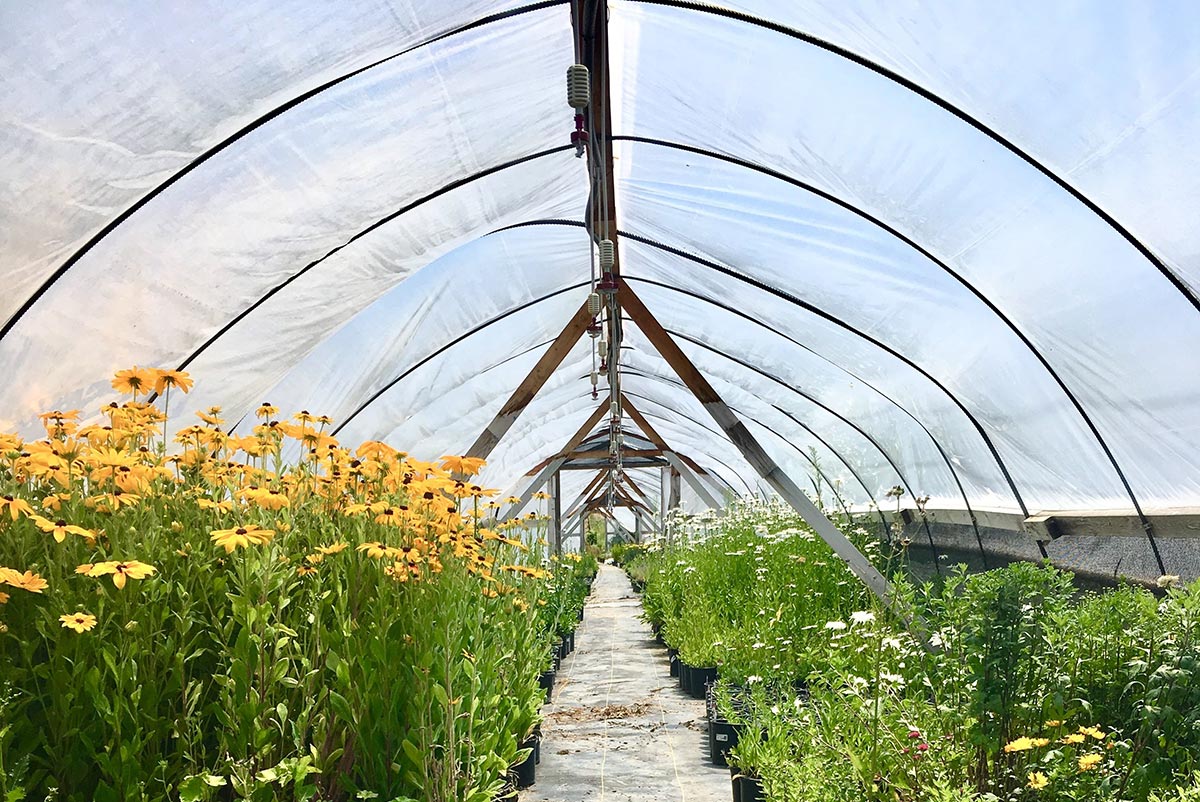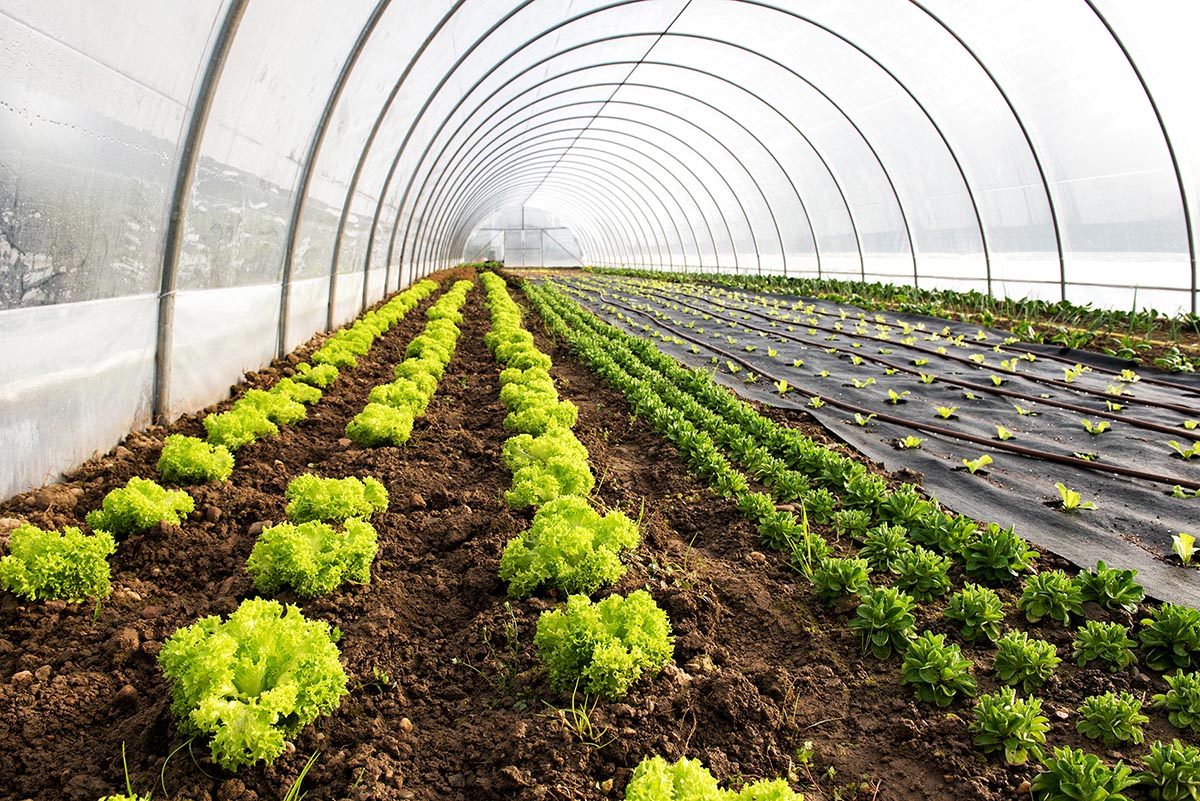
Double Chamber Films: use and benefits, even with pollinators

With the development of technology, the farming techniques used in the fields have evolved in such a way that, currently, it is common to see companies invest a great part of their time searching for new alternatives that allow them to progressively improve the processes they apply to their crops.
That is the case of double-chamber films, a trend that is increasingly gaining momentum in the industry of agriculture, since they are being used more frequently in order to optimize crop conditions, which in the short term will translate, among other benefits, in an increase in quality and quantity of yield.
What is the use of double chamber films?
It is a system that allows creating an air chamber between two layers of film, with thicknesses starting at 40 microns. The chamber is kept inflated (at the necessary times of day/night) by means of small fans that inject air through PVC pipes and flexible conductors. This reduces the loss of heat to the outside, while it saves energy and controls the temperature. The system is so versatile that it can be implemented in the roof area of the crops, as well as in the perimeter. Sometimes it does not inflate (because the greenhouse structure does not allow it) yet it remains effective.
It is worth mentioning that, initially, the use of this type of films aimed at raising the temperature in the coldest months of the year, since these climatic conditions caused a significant decrease in quality and production in crop areas.
What are the benefits of double chamber films?
By using double chamber films, the conditions inside the greenhouse can be altered in a positive way, since it allows to raise the temperature at the specific times when the crop needs it, although slightly reducing the amount of visible light.
As a consequence, it reduces temperature changes between day and night, generating a more balanced environment that prevents the crop from suffering sudden changes (stress) that may adversely affect its uniform growth rate. Its function is truly essential in certain crops during the end of fall, winter and early spring (Europe).
The use of double chambers films prevents the dripping of water from the cover to the crop, reducing the proliferation of diseases in the plants by the excess of humidity. Likewise, the exposure to pesticide treatments is isolated, considerably increasing the duration of the outer cover.
By having a favourable climate inside the greenhouse, the plants grow faster, the harvests increase, and the resulting product exhibits a higher quality. In addition, anti-drip additives allow the entry of a greater amount of light, promoting photosynthesis and also increasing the interior temperature.
Double chamber films and pollinators
Although the use of films is crucial to improve crops, pollination cannot be left aside. The reason is that by using bees and bumblebees the production cycle is favoured, especially in fruits and vegetables. Crops benefit by increasing their yield, fruits and vegetables reach a better version of themselves since they tend to be larger and with fewer deformities, and the smaller fruits are pollinated even in times of stress. For that reason, it is important to state that double-chamber film covers are respectful of pollinators.
Some of the problems that may arise during pollination are:
- Bad flowering or poor and irregular flowering.
- Use of repellents that cause the death of bumblebees.
- Poor pollen quality caused by excessive humidity.
- Location of the hive with respect to the crop.
Here it is also essential to highlight the role of double-chamber films in the control of humidity inside the greenhouse, since, as we previously mentioned, it prevents water from dripping and generates more balanced environments.
Regarding the location of the hives, there are companies dedicated to look for alternatives and offer hive services if you require them. There are several types of hives that are used according to the requirement and the season of the year: winter, summer and fruit hives, thus guaranteeing crop protection.





![[eBook] Sustainability and water management](https://agriplasticscommunity.com/wp-content/uploads/8_550x310_ENG-440x264.png)
![[eBook Trends in Agriculture Plastics] Increasing use of biodegradable mulch](https://agriplasticscommunity.com/wp-content/uploads/550 × 310_2_ENG-440x264.png)
![[eBook Trends in Agriculture Plastics] Reducing the plastic used in the manufacture of agricultural films](https://agriplasticscommunity.com/wp-content/uploads/550 × 310_1_ENG-150x150.png)





















